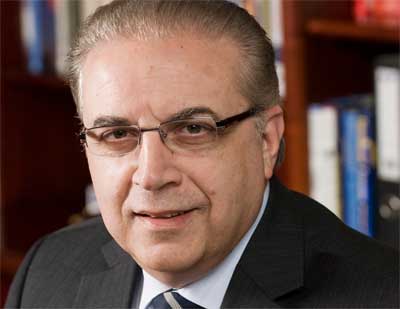Telstra eyes Huawei for 4G overhaul

Chinese networking heavyweight Huawei has nudged its way into yet another major telecommunications bid, this time with Telstra as it tests 4G wireless technology in preparation for its next major network overhaul.
The Chinese networking giant has for the first time won a spot on Telstra's vendor list, being selected for the telco's upcoming Long Term Evolution (LTE) or 4G tests, set to commence in May this year.

Telstra's acting chief operating officer Michael Rocca
(Credit: Telstra)
It's the second lot of good news to be announced for the company in as many months. Chief of competing mobile network giant Vodafone Hutchison Australia Nigel Dews earlier last month confirmed that Huawei had won a bidding spot, along with Nokia Siemens Networks and Ericsson for its seven-year network management deal, believed to be worth as much as $1 billion.
That Telstra is testing Huawei technology is a major coup for the Chinese company. Besides ongoing allegations that Huawei had links to the Chinese People's Liberation Army, which the company refuted, Telstra has traditionally preferred European vendors, going with Alcatel-Lucent for its Next IP upgrade and Ericsson for Next G.
Telstra had spent $1.4 billion with Ericsson for its now-completed Next G network. Now the Swedish vendor, along with Huawei and Nokia Siemens Networks will show off their wares under relatively small trials for what is likely to be Telstra's next massive network investment.
"We have never dealt with [Huawei] before so it's an opportunity to assess and compare their technology," Telstra's chief technology officer Dr Hugh Bradlow told ZDNet.com.au today at its media briefing.
The telco giant's LTE trial will run for a three- to six-month period. The telco is eyeing the 700MHz spectrum for coverage while the 2.6GHz spectrum was viewed as ideal for capacity.
Telstra's acting chief operations officer Michael Rocca said it was too early to say how much it would spend on its LTE upgrade if it committed to it.
"It's too early to give you any number. And if I did I'd be plucking numbers out of the air," he said.
He said the move would be necessary to keep costs down over the longer term. "We need to go down that path, otherwise we will keep on having to build those base stations and your costs — unit costs — goes up, given the requirements we can see for data coming up for our network."
The telco has long viewed LTE as its preferred technology. It can, depending on how the network is designed, deliver speeds of up to 150Mbps — a significant boost on Next G's current real-world speeds of 8Mbps (although the launch of Telstra's so-called dual-carrier technology is expected to double that number).
"We know what LTE technology can do with spectrum," said Rocca. "We know what we know today in terms of the growth rates. What we're saying is we know we have to take that path."
Rocca pointed out that the company had a lot of base stations, and Ethernet backhaul connecting those stations. He explained that the company's investment in LTE was being driven by costs associated with building even more base stations.
"We know the efficiencies that LTE will give us. So when you marry all that up, you can work out that it makes sense," he said.